Discover your path to parenthood today.
A Closer Look at Fertilization During IVF
In vitro fertilization (IVF) has helped millions of women achieve their dream of starting a family. During this complex procedure, the doctor will fertilize a woman’s eggs in a petri dish before placing them in her uterus (or the uterus of a surrogate). The actual fertilization of eggs occurs in a laboratory setting at our practice. At the Fertility Center of San Antonio, we believe in the importance of educating our patients about the fertilization process so they can feel comfortable and confident in their care. To learn more about fertilization during IVF, schedule an appointment at our San Antonio, TX, practice today.
The Basics of the Fertilization Stage
Fertilization refers to the third stage of IVF treatment, following ovulation induction and egg retrieval. In basic terms, the fertilization process involves combining healthy eggs and sperm in a petri dish, and then allowing them to incubate. Through this process, one or more eggs can become fertilized and develop into viable embryos. These embryos can then be transferred to the uterus to facilitate pregnancy.
Understanding Fertilization in Detail
Insemination
The first step of the fertilization stage involves insemination. During insemination, healthy eggs are isolated in a lab and placed in a petri dish with a special medium. Next, sperm provided by a partner or donor are placed into the same petri dish in order to fertilize the eggs. Before performing insemination, doctors will first separate healthy sperm from the rest of the semen using a process known as sperm washing. Once the egg and sperm have been combined, they will be placed in an incubator to promote cellular division.
Incubation and Embryo Culture
Following insemination, the eggs become fertilized by the sperm and begin to split at a cellular level. Typically, this process takes between two and six days. Though the embryo may be ready for transfer after just two or three days (during what is known as the cleavage stage), your fertility specialist may wait until the blastocyst stage, which occurs five to seven days after insemination. Performing embryo transfer during the blastocyst stage results in a greater likelihood of live birth. However, it also typically yields fewer viable embryos. We can determine which stage is preferable to perform embryo transfer during your initial consultation.
We now offer Nature’s IVF™, also known as INVOcell™, an alternative procedure in which incubation takes place within a special device that is inserted into the hopeful mother’s vagina. For the right candidates, Nature’s IVF can provide comparable success rates at a lower cost. We can evaluate your candidacy for this procedure during a consultation.
Intracytoplasmic Sperm Injection
If we detect an issue with sperm quality or sperm motility, or the sperm fail to fertilize the eggs, we can also perform intracytoplasmic sperm injection (ICSI). This procedure involves injecting a single healthy sperm directly into an egg. To ensure the best possible chance of success, we perform this process using an advanced microscope. ICSI and other insemination options can be discussed during the consultation process.
Contact the Fertility Center of San Antonio
At the Fertility Center of San Antonio, it is our mission to provide state-of-the-art therapy in a supportive setting. We recognize that IVF is a complex procedure and a very delicate subject, so we take extra care to ensure that our patients are informed. To learn more about the fertilization process during IVF, contact our office today.











